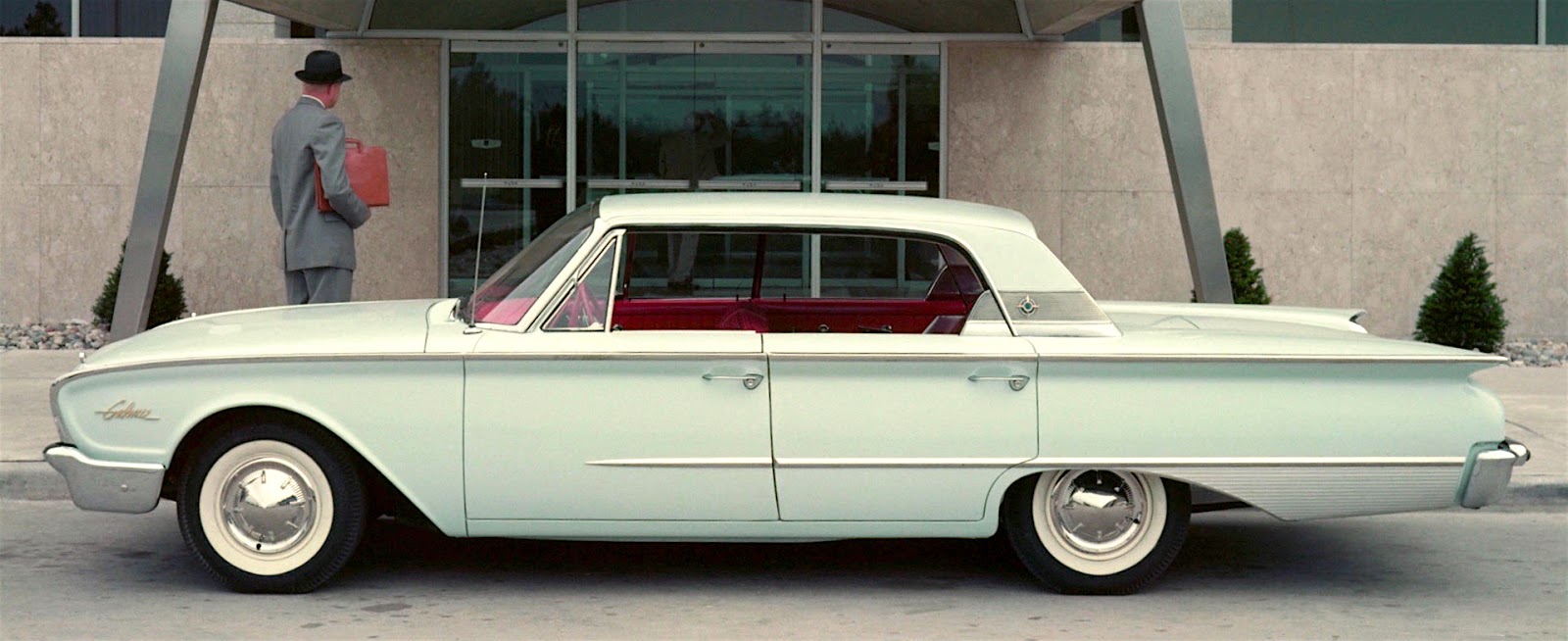All this was what could be seen on streets, highways and in parking lots. But inside Ford's styling studios a sense of design sanity was starting to emerge as styling for early 1960s models was being finalized. (The same was true at GM, though on a very slightly later timeline. But Chrysler remained in the Virgil Exner zone of strange shapes for a while longer.)
The subject of this post is Ford's top-of-the-line Galaxie model (Wikipedia entry here) as restyled for the 1960 model year. It was a considerably above-average design for its time that suffered the usual sad fate of being poorly facelifted the following year, 1961.
1959 Ford Galaxie 500 - Barrett-Jackson photo
Setting the scene is the 1959 Galaxy, the final facelift of what was a nice new 1957 design that was badly corrupted for 1958. Fords never had elaborate tail fins, and this Galaxie's rear fender features a fin transformed into small ridge atop a tubular shape. The grille follows a fad for tiny shapes filling the air intake opening, a treatment first seen on 1958 Buicks and Cadillacs and currently being revived on Mercedes-Benz models such as the CLA.
1960 Ford Galaxie Starliner
Here is the hardtop coupe Galaxie, the nicest looking model. The previous panoramic windshield has been replaced by a conventional windshield where the A-pillar leans backward. In place of a tail fin we find a horizontally oriented blade running along the car's shoulder that ties into sculpting at the front of the car. Quad headlights remain, but are better integrated into the frontal ensemble.
1960 Ford Galaxie Town Victoria
The four-door hardtop Galaxie has a less-graceful angular passenger greenhouse.
1960 Ford Galaxie Town Victoria
Even so, the greenhouse design is simple, relating fairly well to the rest of the car. The large C-pillar is in the same spirit of previous Fords such as the tops on the initial Thunderbirds and even that of the unfortunate '59 Galaxie in the upper image above. On the minus side of the design ledger is the considerable rear overhang whose only real justification is the trunk carrying capacity it created.
1960 Ford Starliner - brochure page
This shows the rear styling. The side blades indeed have a jet fighter look where they terminate on the trunk lid. By ending a little ways forward of the back end of the car, they reduce the visual bulk of the trunk and overhang. Overall, a fairly clean design solution to the unnecessary problem created by all that overhang.
1961 Ford Galaxie - sales photo
Galaxie's 1961 frontal facelift was a step backward, though the concave grille is not a bad idea. The problem is where the outer headlights "turn the corner" from the front to the car's sides -- often a difficult design task with modern, "envelope" bodies. What we find here is a concentration of lumpy shapes instead of the cleaner separation of fender and grille found on 1960 Galaxies.
1961 Ford Galaxie - rear 3/4
The blade design is gone, replaced by rounded (and heavier-looking) fenders towards the front and small, canted fins towards the rear. The fins and round tail lights recall the nice '57 Ford design. In general, the aft end of the '61 Galaxie is a slight improvement over that of the '60 model.
























































